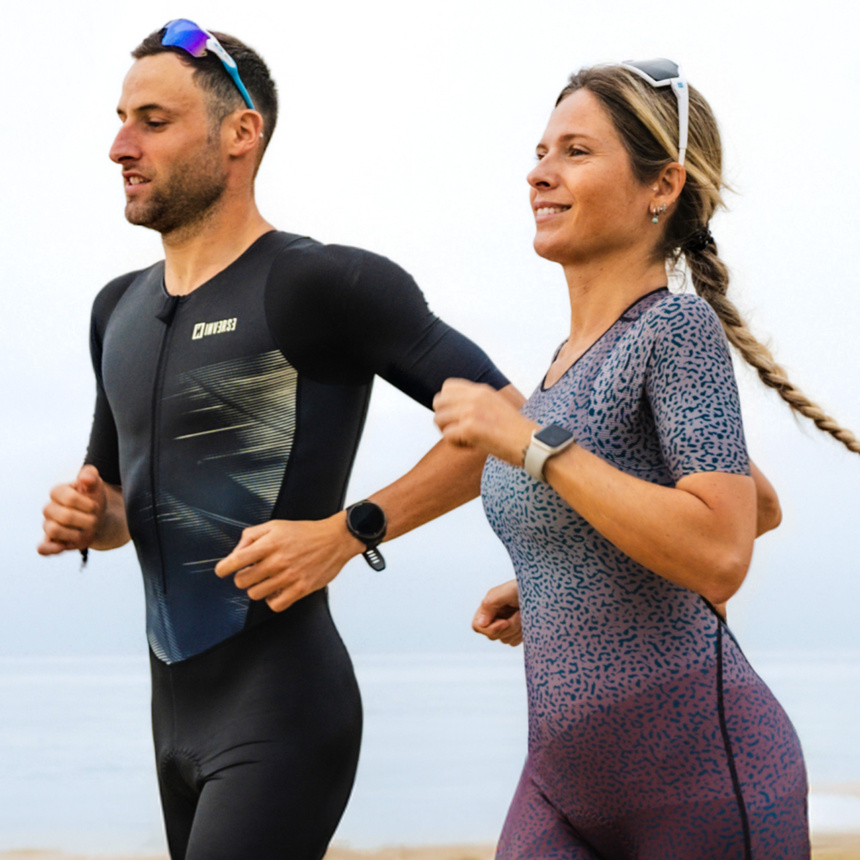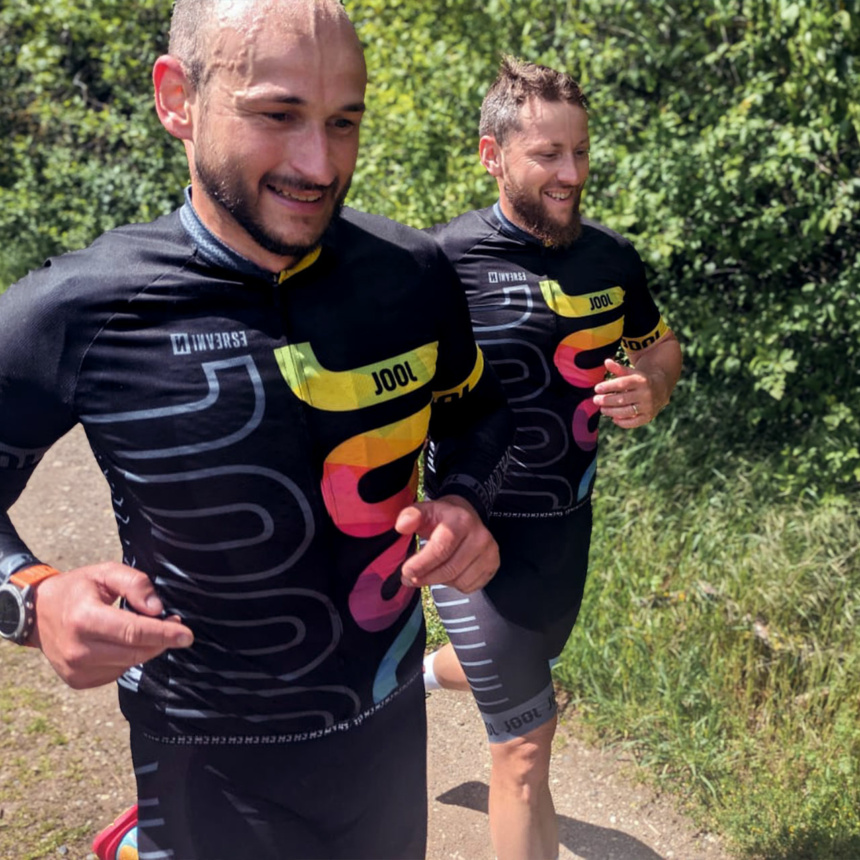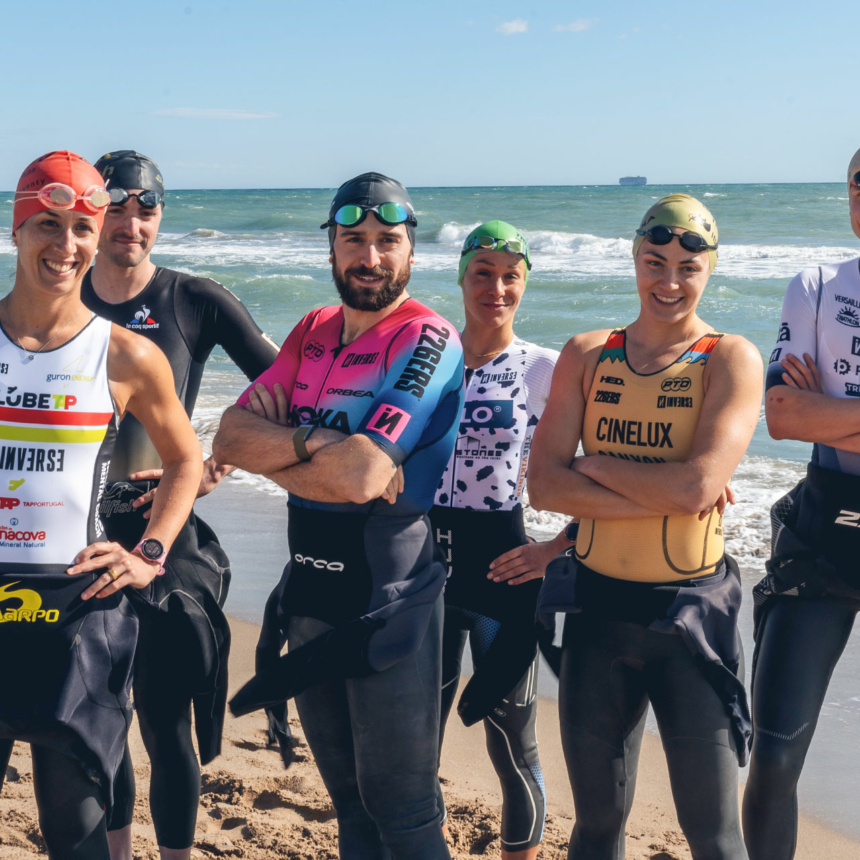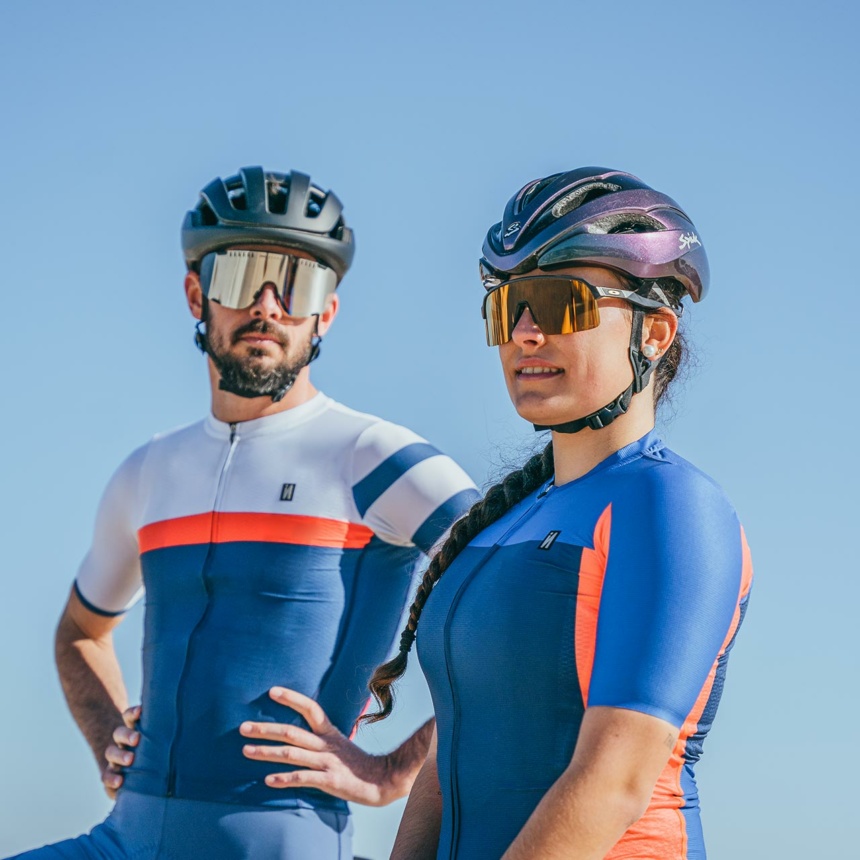The triathlete Sara Pérez puts the aerodynamics of her new triathlon apparel to the test in the Silverstone wind tunnel
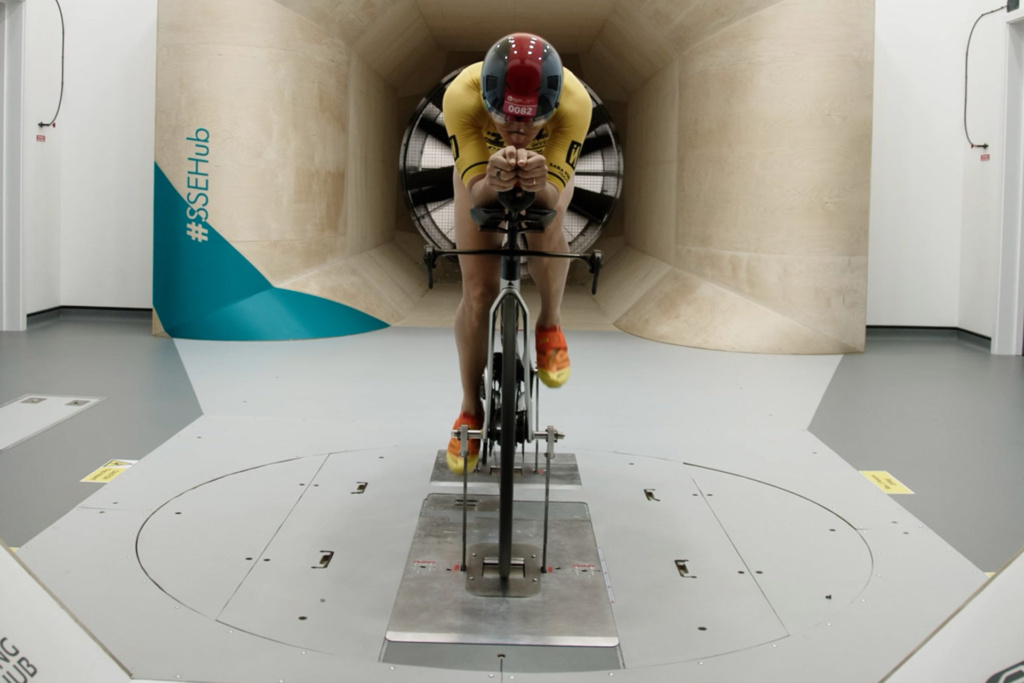
In order to improve her athletic performance on her bicycle, the triathlete Sara Pérez Sala went to the wind tunnel at Silverstone in the United Kingdom in late January 2023 to test various Inverse triathlon swimsuits, and choose the one she is going to compete in this season.
Sara Pérez tested seven different models of Inverse triathlon swimsuits in aerodynamic tests on her bicycle in the wind tunnel at Silverstone.
The wind tunnel at Silverstone is a specialised facility located at the Silverstone race track in the United Kingdom. This wind tunnel is used for aerodynamic tests on racing motor vehicles, as well as triathlon bicycles.
The triathlete Sara Pérez Sala and her coach Jaime Menéndez de Luarca went to the spectacular Wind Tunnel at the Silverstone Sports Engineering Hub, in Silverstone (United Kingdom) in late January 2023. Their objective: to test and enhance the performance and aerodynamics of her new triathlon swimsuit, designed and manufactured by Inverse. Sara also tested her new bike, its handlebars and her helmet.
The wind tunnel: an effective tool for improving triathletes‘ aerodynamics.
Wind tunnels are widely used for aerodynamic testing in various sports. Wind tunnels are used by triathletes to assess wind resistance and optimise the rider’s position on the bicycle during triathlon cycling events.
Tests for triathletes in wind tunnels involve subjecting the cyclist to controlled air currents in an enclosed environment. During the test, the triathlete rides their exercise bicycle on a platform placed inside the wind tunnel. As the wind tunnel generates adjustable air currents, it assesses how the rider interacts with the wind at different speeds and angles.
These tests have several benefits for triathletes:
- Optimisation of their position: wind resistance is minimised by adjusting the rider’s position on the bike, such as the height of the handlebars, the angle of the body and position of the arms. An aerodynamic position can make a significant difference to a triathlete’s performance and their ability to maintain a high speed during the cycling stages of a triathlon.
- Evaluation of their equipment: wind tunnels are also used to test out different combinations of bicycles and components, including wheels, helmets and triathlon wear. These tests can determine which combinations of equipment offer the least wind resistance, thereby improving the triathlete’s performance.
- Reduced times in races: by improving their aerodynamics, triathletes can achieve greater efficiency and reduce the total time spent on the cycling stage. Every second saved during this stage can make a significant difference in the overall ranking of the competition.
Wind tunnel testing for triathletes is undoubtedly a valuable tool for optimising their aerodynamics and improving their performance in the cycling stage of a triathlon. These tests mean that the rider’s position can be adjusted and different combinations of equipment can be evaluated in order to reduce wind resistance and ultimately achieve faster times in races.
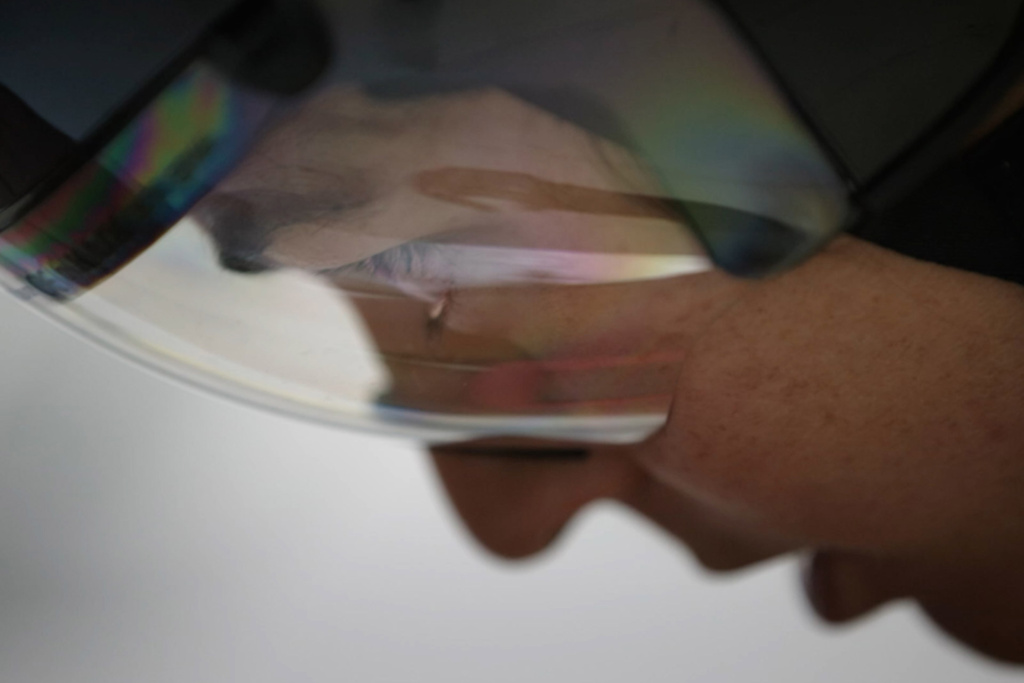
Why test triathlon wear in a wind tunnel?
Testing triathlon apparel in a wind tunnel can be useful for assessing its aerodynamics and its ability to reduce wind resistance under competition conditions. Although specific wind tunnel testing for triathlon apparel may not be as widespread as testing of positions and cycling equipment, it can be carried out to obtain additional information on the aerodynamic performance of garments.
During these tests, the triathlete wears various items of triathlon apparel for testing, while riding a stationary bike inside the wind tunnel. The wind tunnel generates adjustable air currents that simulate racing conditions. Data on wind resistance, turbulence and other factors related to aerodynamic performance are recorded.
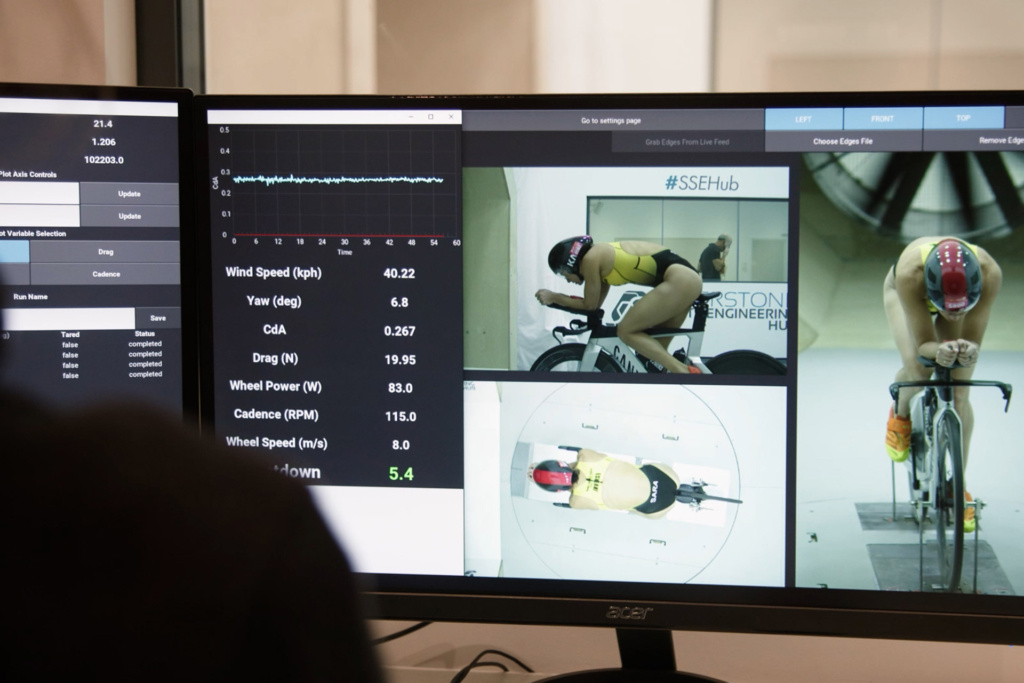
The wind tunnel tests for triathlon wear have the following benefits
- Evaluation of aerodynamics: It is possible to analyse how triathlon wear affects the triathlete’s wind resistance and efficiency during the cycling and running stages. This can help identify which garments offer better aerodynamic performance and which may create more drag.
- Garment design and development: The results obtained in wind tunnel tests provide valuable information for the pattern creators and designers working on our custom triathlon wear ranges. By understanding how specific design features such as seams, material and ventilation panels affect aerodynamics, more efficient garments that are better suited to the needs of triathletes can be developed.
- Comparison of garments: Wind tunnel testing also provides a comparison of different triathlon garments in order to determine which one provides the best aerodynamic performance under similar conditions. This can be useful for triathletes aiming to select the most appropriate garments for their competitions, taking the reduction of wind resistance into account.
Although specific wind tunnel testing of triathlon apparel may not be as widespread as other cycling-related tests, it can provide valuable information on the aerodynamic performance of garments, and help triathletes choose the most efficient alternatives.
The triathlete Sara Pérez Sala carried out specific tests on the triathlon swimsuit, which is the garment which Sara wears when she is competing. Up to seven prototypes with different finishes, sleeves and fabrics were tested in order to design and manufacture the final triathlon swimsuit which Sara Pérez will wear when competing this season. Details such as the type of cut on the sleeve were also studied.
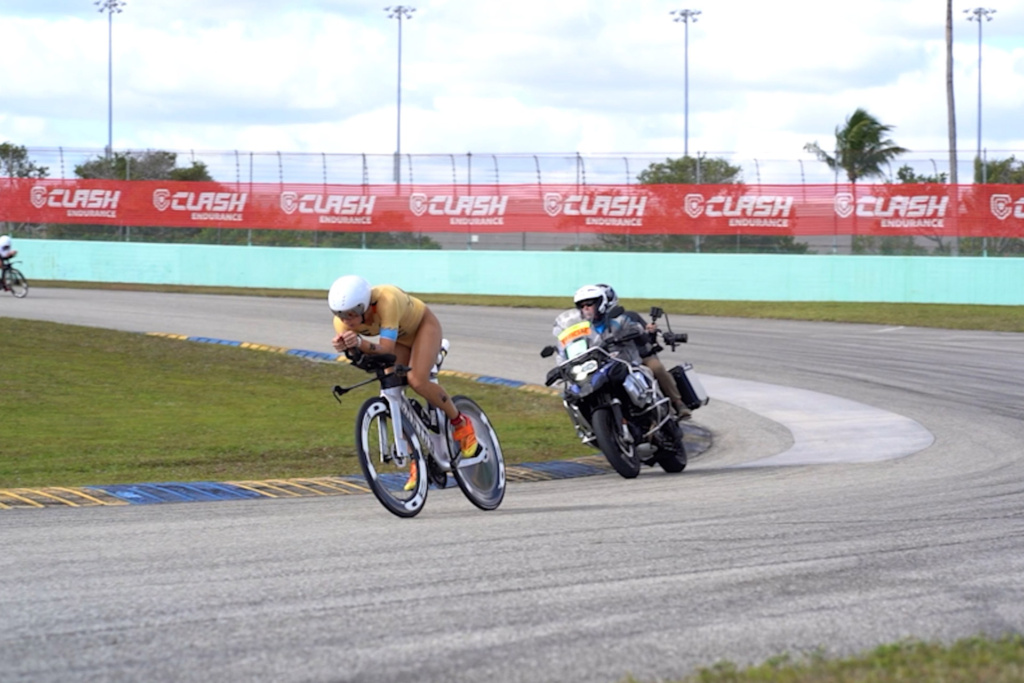
Is the type of triathlon apparel used a determining factor in a competition?
Yes it is! That’s the answer to this question that all professional triathletes and ironman legends will give you, including Victor del Corral. Triathlon wear can have a major impact on the performance and aerodynamics of triathletes. This impact is particularly important for aerodynamics, comfort and efficiency and fast transitions:
- Aerodynamics: wind resistance is a key factor in triathletes‘ performance during the cycling stage. Aerodynamic triathlon wear is designed to reduce wind resistance and minimise turbulence around the triathlete’s body. One-piece suits or triathlon suits are usually tighter and made of low-friction materials for enhanced aerodynamics. Triathletes can save energy and increase their speed by reducing wind resistance.
- Comfort and efficiency: effective triathlon apparel should also be comfortable and provide freedom of movement. Stretch and breathable fabrics are common in triathlon apparel, providing better ventilation and helping wick away sweat. Comfort during competition is essential for triathletes, so that they can concentrate on their performance without any distractions or discomfort.
- Fast transitions: the transitions between the swimming, cycling and running stages are crucial points in a triathlon. Triathletes can streamline these transitions by choosing the right triathlon wear. For example, one-piece suits can be used for swimming, cycling and running, avoiding the need to change outfits for each stage. This saves time and energy during the competition.
It is important to note that the choice of appropriate triathlon wear may vary according to individual preferences and the specific conditions in each competition. Each triathlete has to try various alternatives and find the combination that is best suited to their needs and goals. That is why Inverse, which has more than 50 years of experience in manufacturing custom sportswear, offers the most extensive largest range of custom apparel on the European market.
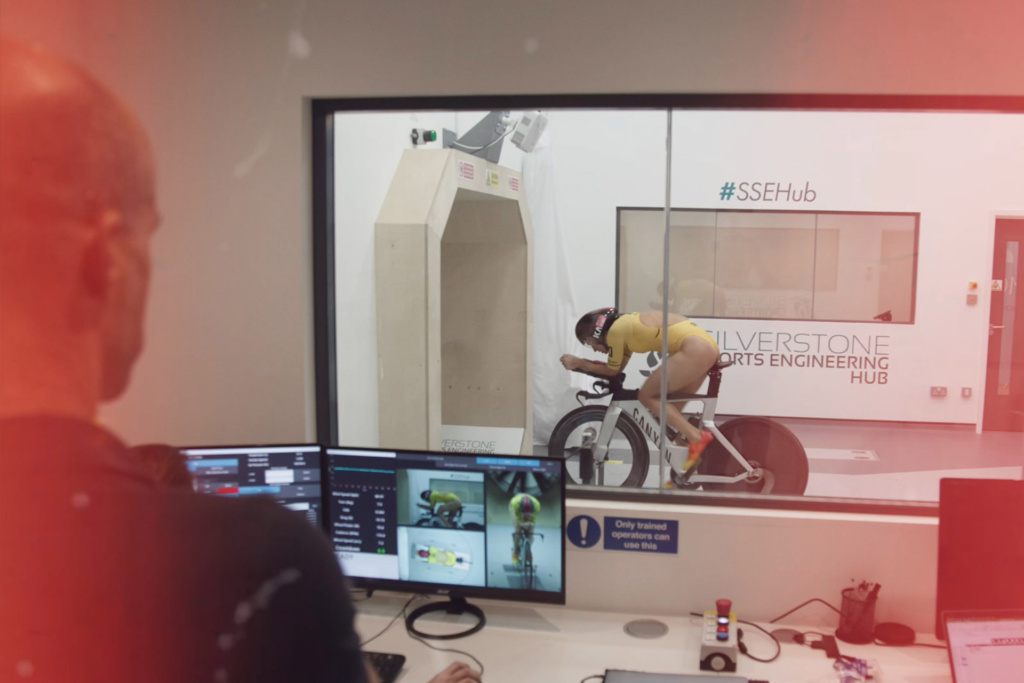
El túnel del viento de Silverstone
The Silverstone wind tunnel is a specialised facility located at the Silverstone race track in the United Kingdom. This wind tunnel is used to perform aerodynamic tests on competition vehicles, such as Formula 1 cars and other motor sports.
This wind tunnel has become internationally renowned as a valuable tool for the development and optimisation of aerodynamic designs of racing vehicles. It provides simulations of real racing conditions, such as wind speed and direction, in order to improve the performance, stability and aerodynamic efficiency of cars.
Wind tunnel testing at Silverstone provides racing teams with accurate data on wind resistance, downforce, airflow and other aspects of vehicles‘ performance. These data enable engineers and designers to make adjustments to the design and layout of the car to maximise its performance on the track.
The Silverstone wind tunnel is not used only by the automotive racing industry, and may be used for aerodynamic testing in other fields, such as sports in general, and cycling and triathlons in particular.
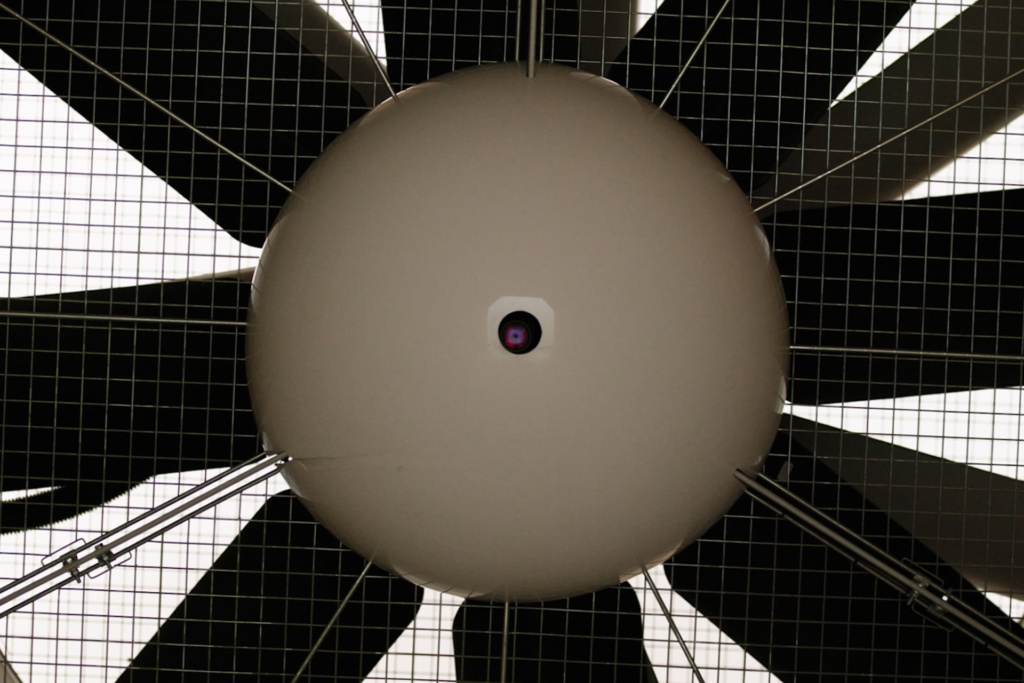
The prestige of custom triathlon wear from Inverse
The Inverse triathlon apparel brand has gained recognition and prestige in the triathlon field due to its focus on quality, performance and customisation of its products. The reasons behind the prestige of Inverse’s custom triathlon apparel have been internationally acknowledged:
- Quality and performance: Inverse has earned a reputation for manufacturing high quality garments that meet the exacting standards of triathletes. The company uses technical materials and advanced technologies to ensure optimum performance. Its products are durable, comfortable, breathable and aerodynamic, enabling triathletes to reach their full potential during competitions.
- Customisation: Inverse excels in offering many customisation options in its triathlon apparel. Triathletes have the opportunity to create unique customised designs for their outfits, suits and equipment. This not only gives them the feeling of exclusivity, but also allows triathletes to reflect their personal identity and that of their sponsors on their competition wear.
- Support for elite teams and athletes: Inverse has established partnerships with elite teams and athletes in the triathlon world. By working with top triathletes, the brand has demonstrated its commitment to excellence, and received valuable feedback for the continued improvement of its products. This relationship with elite athletes also contributes to Inverse’s prestige and credibility in the triathlon community.
- Market recognition: Inverse has gained recognition in the triathlon market and has been used by numerous triathletes in high level competitions. Its presence at major triathlon events such as the legendary Alpe d’Huez Triathlon in France, as well as positive user reviews and recommendations, have contributed to its reputation in the industry.
In overall terms, the reputation of Inverse’s custom triathlon apparel is based on its focus on quality, performance and customisation, as well as its association with outstanding athletes and its brand recognition in the triathlon market. This has led many triathletes to choose the company’s products as a result of their confidence in Inverse’s ability to provide high quality customised garments that are tailored to their specific needs.




